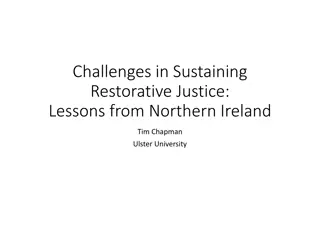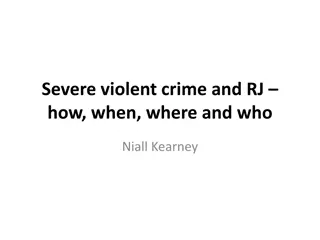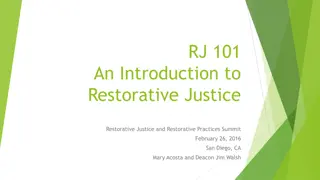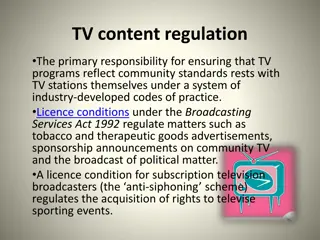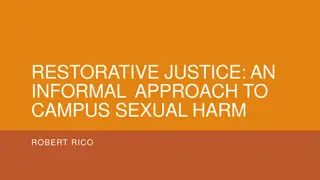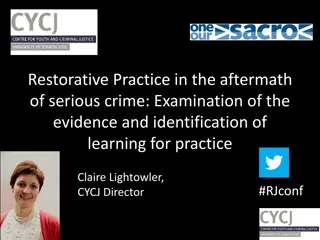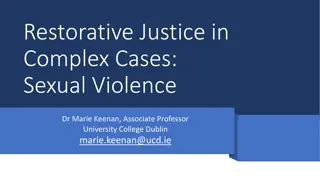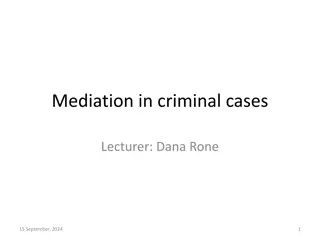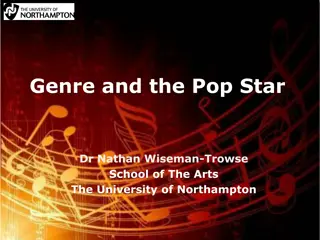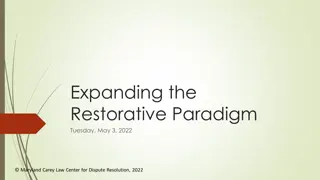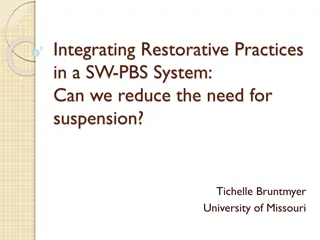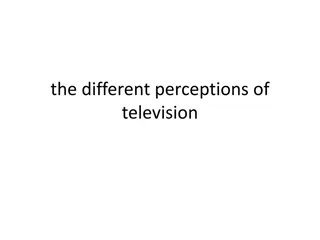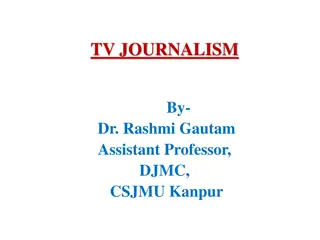Exploring Restorative Violence and Vigilantism in Genre Television
Delve into the portrayal of violence, villainy, and vigilantism in popular genre TV shows like Buffy the Vampire Slayer, Angel, and Supernatural. The analysis covers themes of good and bad vigilantes, racial motivations, narrative justifications, and the characterization of villains, offering insights into the use of violence as a tool for protection and survival in these narratives.
Download Presentation

Please find below an Image/Link to download the presentation.
The content on the website is provided AS IS for your information and personal use only. It may not be sold, licensed, or shared on other websites without obtaining consent from the author. Download presentation by click this link. If you encounter any issues during the download, it is possible that the publisher has removed the file from their server.
E N D
Presentation Transcript
Violence, Villainy, and Vigilantism: The Positioning of Restorative Violence in Genre Television Dr. Kristi Brownfield Dr. Courtney Waid-Lindberg Northern State University
Canons Canon: taken from literary theory and used regularly in fandom; within fandom, the canon is the original media sources Like in literature, what is constituted as canon is arbitrary Fanvid: a mixture of images from a canon source and music to create a new narrative Buffy the Vampire Slayer (BtVS) Angel: the Series (AtS) Supernatural (SPN)
Vigilante Narratives Southern justice Largely racially motivated, mob justice, characterized by the practice of lynching, now seen as unjust or deviant Western justice Formed as vigilante committees or councils, concerned with challenges of council s authority, some racial motivations in vigilante actions but these are generally ignored, often now romanticized and idealized
Vigilantes Narratives Ineptness or inadequacy of law enforcement Law enforcement as antagonists BtVS: cost of doing good; rise to the challenge by any means necessary AtS: rise to the challenge by any means necessary SPN: doing the right thing no matter what; evil is all I see
Good Vigilantes: Saving People. Hunting Things. Justification is specifically about protectionism of innocents, reminiscent of the justification narratives of the South; given the racial demographics of the shows the protectionism is almost exclusive regarding white female bodies Violence is committed defensively, even when used pre-emptively Very little ethical conflict presented within the narratives even when dealing with good antagonists (i.e., vegetarian vampires); narratives of the evil other Violence in pursuit of survival is good when committed by humans
Bad Villains: Just tell me what kind of demon I m fighting. Violence is constructed as the result of appetites, desires, or pleasure Violence for survival is constructed as evil when committed by supernatural (e.g., feeding instincts); follows the long tradition of supernatural/aliens being a metaphor for people of color/race Racial and class presentations: upper class (if white) in SPN and black lower class in all three canons make up the villains
Fanvids and Fan Reactions Fans largely reject the good vigilante narratives within fanvids Violence especially masculine violence is reconstructed as evil Loki s Monsters (Matchbook Romance): Sam and Dean Winchester (SPN) are demons Highlights the excessive & often sexualized violence against women Women s Work (Violet by Hole) by Luminosity & sisabet (SPN) Origin Stories (Coffee by Aesop Rock feat. John Darnielle) by gianjudakiss Shows how violence against women of color is used by within canon and by fans to prop up a white male villain-turned-hero s narrative (AtS, BtVS) Sexualizes violence against men John the Revelator (Depeche Mode) by Sacrilicious (SPN)
Takeaways Why knowing this helps us





